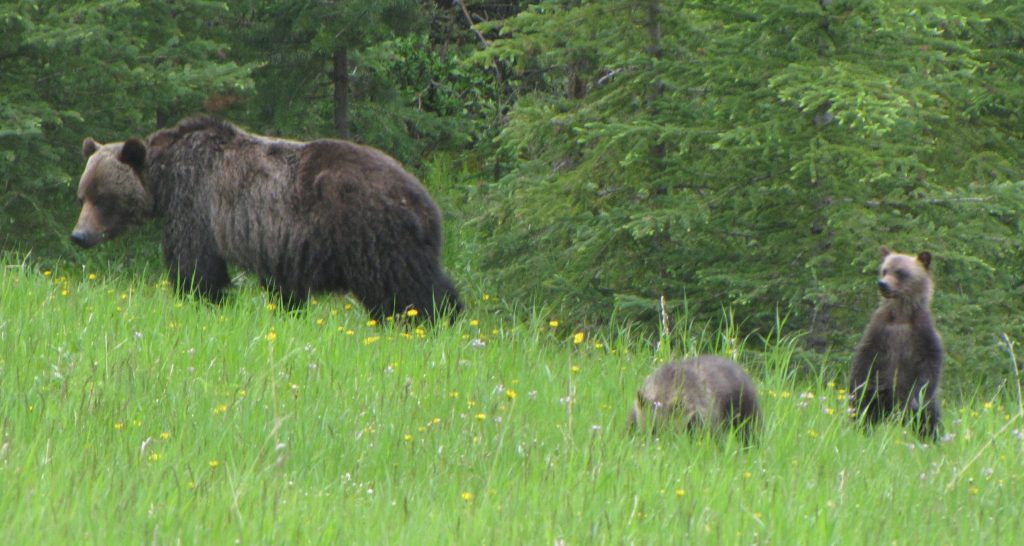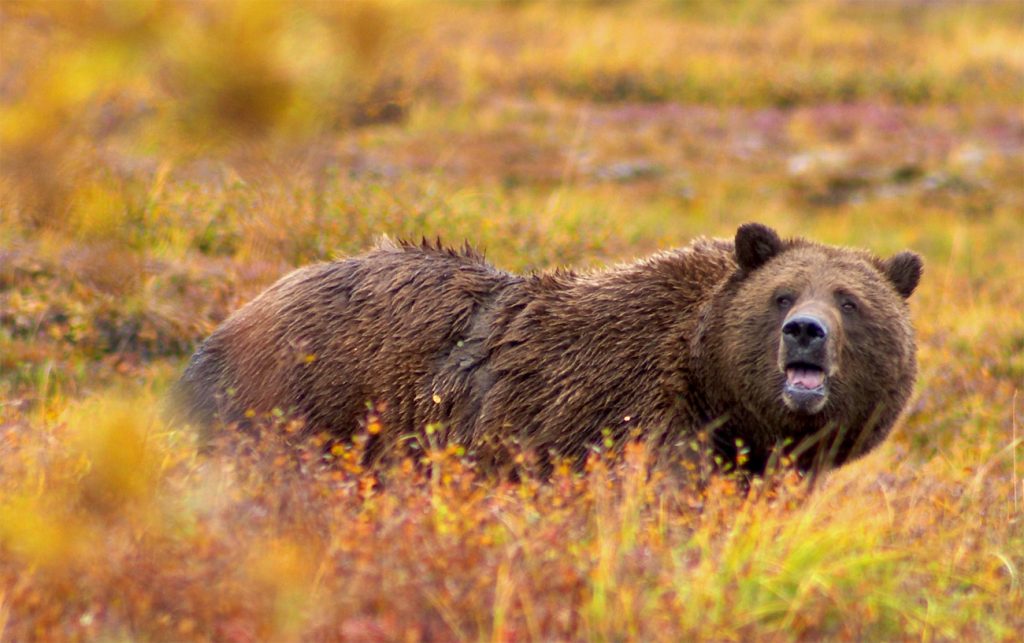100 years ago, Grizzly bears ranged from Alaska to Mexico with populations occurring midcontinent, however this spread has been drastically reduced with 2% of historical range remaining in contiguous USA. They are currently listed as threatened in USA, although Canada maintains healthy populations and has them classified as least concern. These are animals who are up to 8ft tall and can weigh 800 pounds, so you may be wondering how their populations have declined so rapidly in specific parts of the world. Primary consensus is due to over hunting because of threat to humans and conflicting interest, such as both liking pork. It is possible to maintain sustainable hunting practices, which has been demonstrated in British Columbia where Grizzly bear hunts are a sought-after commodity that brings in a significant revenue. There is hope for the Grizzly bear due to increased conservation efforts since the 1970’s, so much that they may lose their threatened status. This has caused a stir with some people celebrating the possible change, and others who think it is to soon. I will discuss some reasons why the Grizzly bear may still be endanger of extirpation even though current census have shown slow growth.

Creative Commons Attribution-Share Alike 3.0 Unported
Grizzly bears are often considered a flagship species due to being large, charismatic megafauna who require large areas of land to maintain viable populations, which generally results in greater attention from humans. One aspect that grants them extra attention may also be their greatest adversary, which is the need for large areas to maintain viable populations. Through human development grizzly bears are losing much needed space, although now more than ever humans are expanding deep into the wilderness. Often seen as benign although often more destructive than anticipated are roads. Hundreds of Kilometres are created each year to assist in resources extraction, so that many can maintain civil comforts. A massive increase of resource extraction in Alberta has lead to Grizzly bears becoming Threatened to the province, with roads being a prime suspect. The presence of roads have been known to alter bear distribution and increase mortality. Key reasons why roads can affect grizzly populations so easily are due to increased access they offer legal and illegal hunters, which results in greater mortality. Importance of outdoor connection is being increased in todays society, which has resulted in a surge of outdoor recreationist. Not intentionally, this increased recreation is having a negative impact on grizzly bear distribution, since it has been shown that grizzly bears tended to avoid areas where outdoor recreational trails are present. This results in increased disturbance affect on Grizzly bears, and a decrease in their available area. Roads also assist an increase in outdoor recreation. During the fall bears must eat enough so a significant fat reserve can form and sustain them over winter, however increased roads allow for greater disturbance which can reduce forage time and efficiency. This results in many bears being unable to survive harsh winters. Government of Alberta has recognized many of these vital factors for maintaining viable populations, so they are implementing steps so that more area is conserved and reduce the overall amount of road being created.
To make matters worse Grizzly bears are notorious for having the lowest productivity in North America, with reaching reproductive maturity at 4 at the earliest, and than having only 1-2 cubs every 4 years. Grizzly bears have delayed implantation so during the fall females can assess their readiness for the upcoming winter and if she deems it necessary she can reabsorb the embryo rather than give birth. This is why disturbances having an impact on fall foraging can have such extreme detrimental effects on population sizes. Winter activities also affect Grizzly bears negatively since they are easily roused, and if significantly disturbed can have long lasting effects.

Creative Commons Attribution-Share Alike 3.0 Unported
The importance of apex predators in an ecological system can not be overstated, therefore it is vital conservation efforts continue so that the extirpation of Grizzly bears does not occur. Grizzly bears are sensitive to human effects on the landscape, which often result in altered behaviour of distribution, foraging, and reproduction. The need for large, undisturbed areas results in difficult conservation issue, although through hard work and dedication it is possible to co-exist with these magnificent animals.

CC BY 2.5


Recent Comments